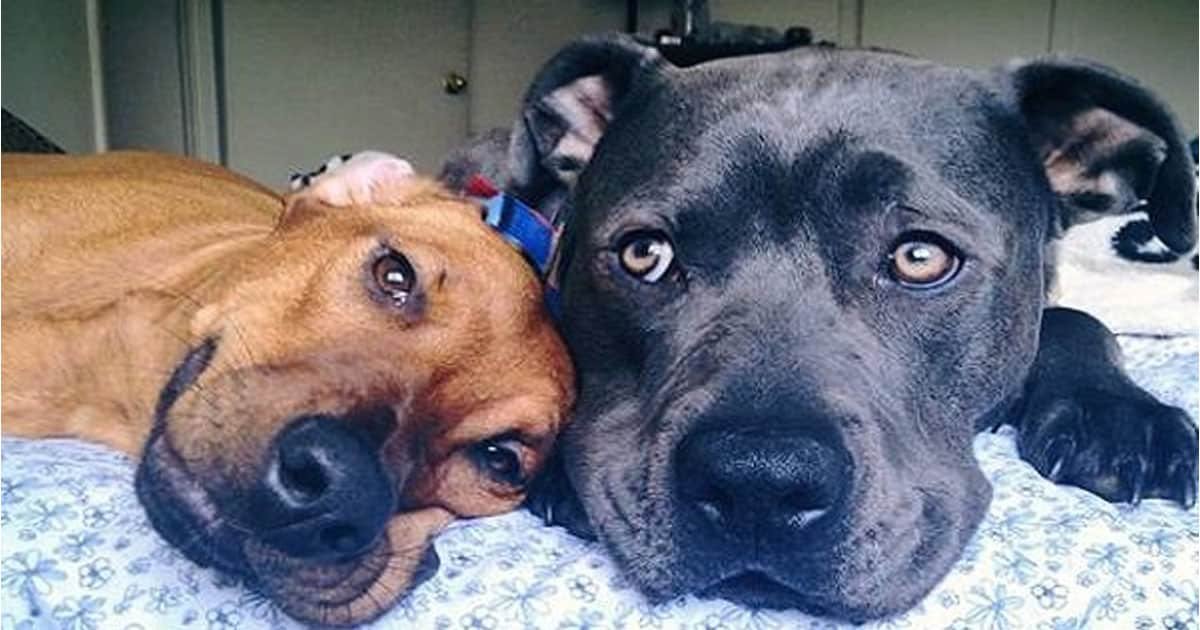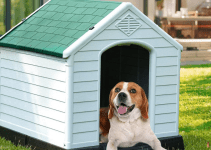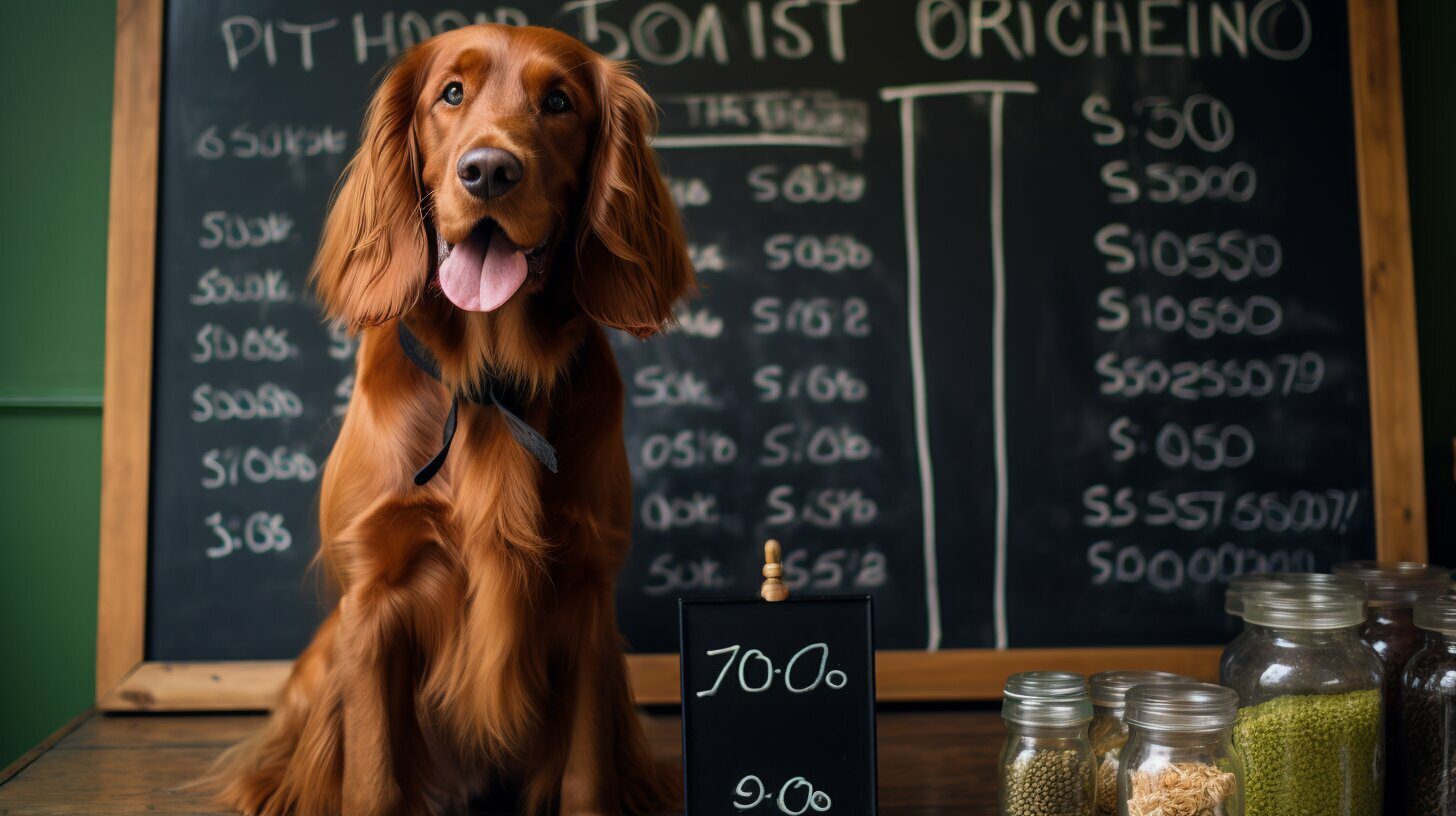
The Doxiepoo is a designer dog breed that crosses the Dachshund and the Toy Poodle. This pup is a small to medium-sized dog with a lifespan of 10 to 15 years. They are energetic and loving dogs that make great family pets. Keep reading to learn everything you need to know about the Doxiepoo!
Is a Doxiepoo a good dog?
The Doxiepoo is a hybrid dog created by crossbreeding a Dachshund and a Toy or Miniature Poodle. While every individual dog is unique, these pups typically inherit the best traits of both parents. They are intelligent and easily trained, like Poodles, but also have the loyal and affectionate nature of Dachshunds.

How much does a Doxiepoo cost?
The price for a doxie doodle can vary depending on how reputable the breeder is and what type of puppy they have available. An average, healthy pup will cost around $250 but if you want one with great genetics or an animal who has been raised from birth without any health problems, expect to pay up to 2k!
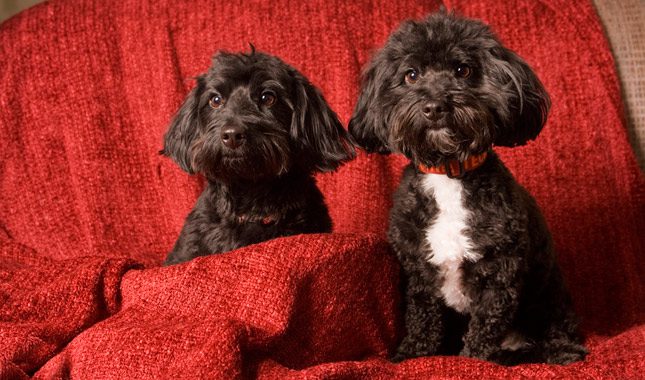
What are the characteristics of a Doxiepoo?
A Doxiepoo is a hybrid dog breed that crosses a Dachshund and a Toy or Miniature Poodle. These dogs are often bred to combine the best characteristics of both parent breeds. As a result, Doxiepoos are typically small dogs with the long, slender bodies of Dachshunds and the curly coats of Poodles.
They are often amiable and intelligent dogs and can be easy to train. However, like all hybrid breeds, they can inherit health problems from either parent breed. For this reason, it is essential to consult with a veterinarian before purchasing or adopting a Doxiepoo.

Temperament of a Doxiepoo
Doxiepoos are intelligent, playful, and loyal dogs. They are good with children and other pets and make excellent family dogs. They can be stubborn at times but are generally easy to train. Like their Dachshund parent, they have a strong hunting instinct and love to dig! They also tend to bark a lot. Overall, Doxiepoos are active little dogs that make great companions.

Do Doxiepoo dogs shed?
All dogs shed at least some hair, and Doxiepoos are no exception. The amount of shedding will vary depending on the individual dog, but regular brushing can help to minimize the amount of hair that is shed.
In addition, Doxiepoos typically only shed seasonally, so you may notice an increase in shedding during the spring and fall. If you’re looking for a hypoallergenic breed that doesn’t shed much hair, a Doxiepoo might be a good option. However, be prepared to brush regularly to keep your dog’s coat healthy and minimize shedding.

Is Dachshund poodle mix good dogs?
Dachshund poodle mixes are known to be intelligent, affectionate, and loyal dogs. They make good family pets and are good with children. They need moderate exercise and do well in tiny homes or apartments.

What is the lifespan of a Doxiepoo?
Doxiepoos have a long lifespan, anywhere between 10-18 years. While mixed breed dogs tend not to be as prone to health problems as purebreds, they do fall victim sometimes due primarily because of heredity issues or just bad luck with accidents, etcetera – it’s always crucial for these furry friends that we take care of!

What is a Dachshund poodle called?
This type of hybrid dog is also commonly referred to as a “Doodle.” While the origins of the Dachshund Poodle are unknown, it is thought that this hybrid first appeared in the United States during the 1990s. Since then, the popularity of the Dachshund Poodle has grown steadily, thanks to its unique appearance and charming personality. Like both of its parent breeds, the Dachshund Poodle is an intelligent and active dog that loves spending time with its family.

What is a Doxiepoo puppy?
A Doxiepoo puppy is a cross between a Dachshund and a Toy or Miniature Poodle. These dogs are typically small, with low-shedding coats that come in various colors. They are energetic and playful but also highly intelligent and trainable. Because of their small size, they make excellent companions for city dwellers or those with limited space. Doxiepoos are also known for being particularly loyal to their owners and can make amazing therapy dogs. If you are looking for a charming and loving addition to your family, a Doxiepoo puppy may be the perfect fit.
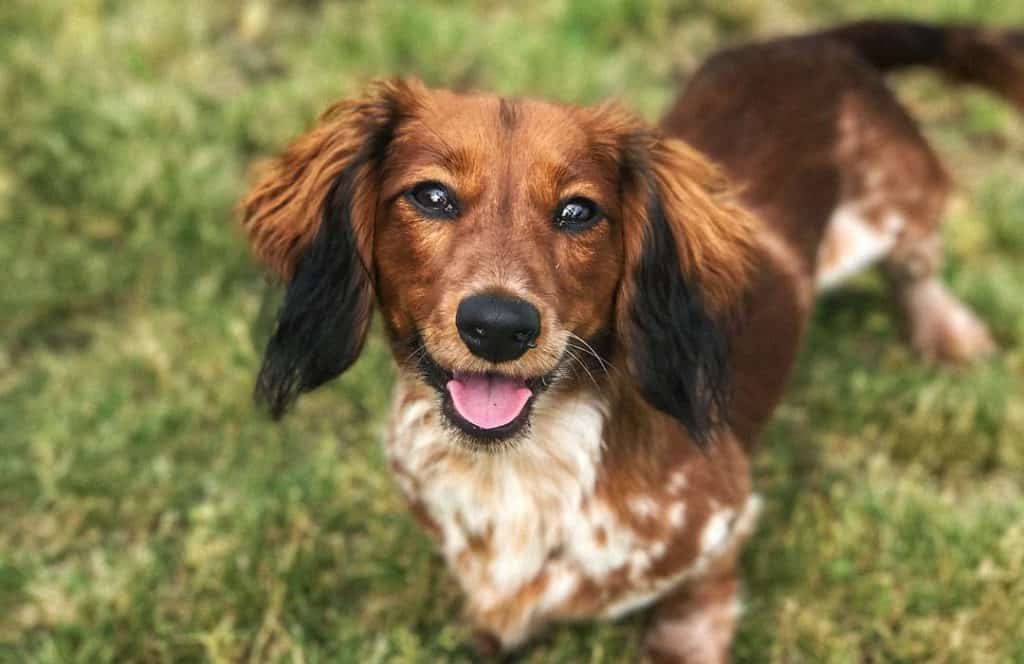
What is a Doxie Doodle?
A Doxie Doodle is a cross between a Dachshund and a Poodle. These dogs are usually small to medium in size and typically have the long body and short legs of a Dachshund combined with the puffy coat of a Poodle. While each dog is unique, many Doxie Doodles inherit the best traits of both parents. They are often intelligent and playful and tend to be fewer Shedders than purebred Dachshunds. In addition, because they come in a wide variety of colors and patterns, there is sure to be a Doxie Doodle that is perfect for every family.

How big do Doxie Doodles get?
While their exact size can vary depending on the ratio of Dachshund to Poodle in their parentage, they typically grow to be between 10 and 15 inches tall at the shoulder. They usually weigh between 12 and 20 pounds when fully grown. However, some Doxie Doodles may be larger or smaller than average, so it’s important to ask the breeder about the expected size of the puppies.

Do Doxie Doodles shed?
The Doxiepoo is a hypoallergenic dog thanks to its poodle parent and sheds very little if it has long hair. The medium-length doxies require daily brushing because they can get tangles or mats quickly, but this will happen less often with your pup’s regular care.
What is a Dachshund and poodle mix called?
A Dachshund and poodle mix is commonly referred to as a Doxiepoo. This type of dog is a popular choice for many pet owners because of its small size and low-shedding coat.

Do Doxiepoos have health problems?
While they are generally healthy dogs, there are some health problems that you should be aware of if you own a Doxiepoo.
Intervertebral Disk Disease
Intervertebral disk disease (IVDD) is a condition that affects the discs between the vertebrae in the spine. The discs act as shock absorbers and help keep the spine flexible. In dogs with IVDD, the discs can bulge or rupture, putting pressure on the spinal cord and causing pain. Dachshunds are predisposed to this condition, so it is important to watch for signs of IVDD in your Doxiepoo. IVDD includes sudden pain onset, reluctance to move, crying when touched, and paralysis. If you notice these signs, take your dog to the vet immediately.
Pancreatitis
The inflammation of the pancreas can lead to an illness known as pancreatitis. An organ that makes enzymes to aid with food digestion is the pancreas. When the pancreas becomes inflamed, those enzymes begin attacking it, leading to abdominal pain, vomiting, difficulty breathing, and diarrhea. Miniature poodles are predisposed to pancreatitis, so it is important to watch for signs of this condition in your Doxiepoo. If you notice these signs, take your dog to the vet immediately.
Patent ductus arteriosus (PDA)
Patent ductus arteriosus is a congenital heart condition that occurs when the ductus arteriosus fails to close after birth. The ductus arteriosus is a blood vessel that allows blood to bypass the lungs while the puppy is in utero. After delivery, this vessel is supposed to close but in dogs with PDA, and it remains open. This can cause increased pressure on the heart and difficulty breathing. If you notice your dog panting excessively or having difficulty breathing, take them to the vet immediately so they can be diagnosed and treated accordingly.
Hip Dysplasia
Hip dysplasia is a condition that affects the hip joint. In dogs with hip dysplasia, the ball and socket joints do not fit together correctly, leading to pain, lameness, and eventually arthritis. Hip dysplasia is hereditary but can also be caused or aggravated by obesity or injury. Many doxiepoo dogs will require surgery to correct this condition.
Intervertebral Disc Disease (IVDD)
IVDD is a condition that affects the discs between the vertebrae in the spine. These discs act as cushions and help absorb shock. In dogs with IVDD, the discs degenerate and begin to collapse, which can cause pain, weakness, paralysis, and even death if not treated promptly. IVDD is also hereditary but may be aggravated by obesity or injury. Doxiepoos, who develop IVDD, usually require surgery to correct the problem.
Von Willebrand’s Disease (vWD)
vWD is a blood clotting disorder caused by a deficiency of von Willebrand factor (vWF), a protein needed for blood clotting. Dogs with vWD may bleed excessively from even minor injuries and may have prolonged bleeding after spaying or neutering. There is no cure for vWD, but it can be managed with medication and careful monitoring by a veterinarian. This condition is also hereditary but may be aggravated by other health problems such as liver disease or kidney disease.
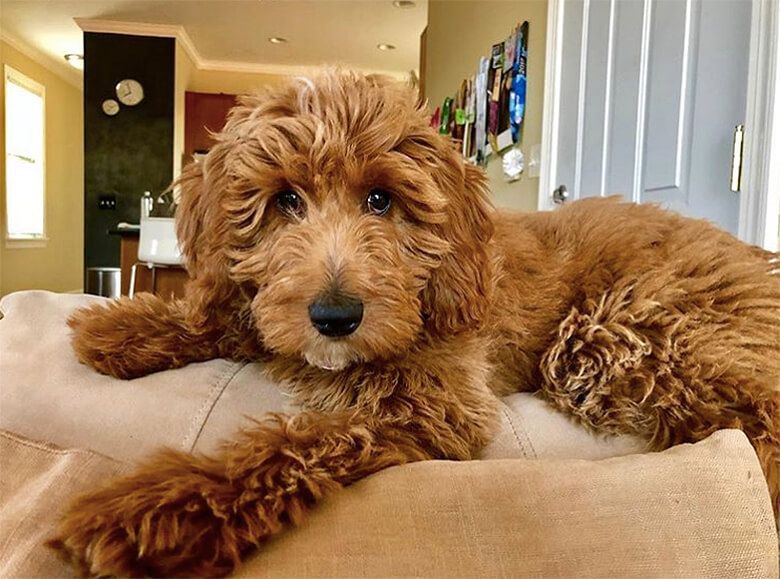
Is Doxiepoos easy to train?
The answer is yes and no. Like all dogs, Doxiepoos require patience, consistency, and positive reinforcement in training. However, you should know a few things about Doxiepoos that will make the process a little easier. For example, Doxiepoos are brilliant dogs, which means they learn quickly. They’re also very food-motivated, so using treats as rewards for good behavior is usually a successful strategy. Keep reading for a step-by-step guide to potty training your Doxiepoo.
Step One: Set Up a Designated Potty Area
The first step in potty training your Doxiepoo is to create a designated potty area in your yard or wherever you’ll be taking your dog to do their business. This could be a small patch of grass or an area of pavement; the key is that it’s accessible and comfortable for your dog. Once you’ve selected a spot, take your dog there frequently (several times per day), so they can get used to it.
Step Two: Choose a Cue Word or Phrase
When it’s time for your dog to go potty, you’ll need to give them a cue that it’s time to do their business. This could be a word or phrase like “go potty” or “do your business.” It’s essential to be consistent with the cue word or phrase you choose; if you use different words each time, your dog will get confused and won’t understand what you want them to do.
Step Three: Reward Good Behavior
As mentioned earlier, Doxiepoos are highly food-motivated, so using treats as rewards is usually an effective strategy. So, whenever your dog goes potty in their designated area, immediately give them lots of praise and a treat. This will help them associate going potty with something positive and increase the likelihood that they’ll do it again.

How Much Exercise Does a Doxiepoo Need?
Depending on their size and activity level, most doxiepoos need at least 30 minutes of exercise per day. This can be broken up into two or three shorter walks or one longer walk. If your doxiepoo is particularly active, they may need up to 60 minutes of daily exercise. However, it’s important not to overdo it – too much exercise can be just as harmful as not enough. Talk to your veterinarian for guidance if you’re unsure how much exercise your doxiepoo needs.
In addition to regular walks, doxiepoos also need access to an enclosed area where they can run and play freely. Of course, a backyard is ideal, but a dog park or even a large room in your home will suffice. Just make sure that the area is safe and free of hazards such as traffic, other animals, or poisonous plants. And never leave your doxiepoo unsupervised – even in a fenced-in yard!
What breed is a Doxiepoo?
Doxiepoos are a cross between the dachshund variety and a toy or miniature poodle. This means full-grown doxies can stand anywhere from 5–15 inches tall and weigh 30 pounds!
Is a Doxen the same as a Dachshund?
While Doxens and Dachshunds may look similar, there are some critical differences between these two breeds. Dachshunds were originally bred in Germany to hunt badgers, while Doxens was developed in the United States as a cross between Dachshunds and Cocker Spaniels.
As a result, Doxens tend to be larger and have longer noses than Dachshunds. They also typically have a more even temperament, making them better suited for families with small children. However, in terms of appearance, the most noticeable difference between Doxens and Dachshunds is their coat color.
While both breeds can come in various colors, Doxens are more likely to have a solid black or brown coat. Ultimately, choosing a Doxen or a Dachshund will come down to personal preferences. But whether you’re looking for a furry friend to cuddle with or a hunting companion, these two breeds are sure to please.

How often should I bathe my Doxiepoo?
You should bathe your Doxiepoo every 4-6 weeks or as needed. This will help keep their coat from getting too greasy, and their skin irritated. If your dog starts to itch more often or get hot spots, it indicates that they need a bath sooner than later. It’s also important to note that you should never go more than two months without bathing your dog, as this can lead to health problems.
Step-by-Step Guide to Bathing Your Doxiepoo
1. Start by collecting all the supplies you will need, such as shampoo, conditioner, towels, and a cup or pitcher for rinsing your dog off. You will also want to ensure the area you are going to bathe your dog in is clean and free of any obstacles that could trip you or your dog up.
2. Fill up the tub with lukewarm water; anything too hot or cold could shock your dog’s system and make them uncomfortable during their bath. If you don’t have a tub big enough for your dog, you can use your kitchen sink or even fill up a large bucket with lukewarm water. Make sure whatever you use has sides high enough that your dog can’t quickly jump out and run away mid-bath!
3. Once the tub is filled with water, gently guide your dog into the tub and begin wetting their fur down with lukewarm water making sure to avoid getting any water in their face or ears.
4. Next, apply shampoo to their fur, making sure to work it well before rinsing it thoroughly with lukewarm water. Be careful not to get soap in their eyes or ears while shampooing them! You may need to rinse and repeat this step if they are filthy.
5. After shampooing, you can apply conditioner if desired, working it through their fur before rinsing it thoroughly with lukewarm water until the water runs clear. Most dogs don’t need conditioner unless they have dehydrated skin or fur but feel free to use it if desired!
6. Finally, remove all the excess water from their fur using a towel before letting them shake off any remaining water droplets outside (weather permitting). If it’s cold outside, dry them off completely before letting them back inside so they don’t get chilled! And that’s it! These simple steps will help ensure you give your Doxiepoo a proper bath without any stressful surprises!

What is the best breed to mix with a Dachshund?
Poodle/Dachshund Mix: Poodles are another popular breed of dog, and they make excellent companions. Poodles are intelligent, trainable, and outgoing – they love being around people and other animals. When mixed with a Dachshund, you’ll end up with a dog with all of the best qualities of both breeds. The resulting dog will be small and playful like a Dachshund and intelligent and outgoing like a Poodle.
Some of the best breeds to mix with a Dachshund to get the perfect pet for your family:
Golden Retriever/Dachshund Mix: The Golden Retriever is one of the most popular dog breeds in the world, and for a good reason. They’re gentle, loyal, and great with kids. Unfortunately, Golden Retrievers are among the best breeds to mix with a Dachshund. The resulting dog will have all of the best qualities of both breeds – they’ll be gentle and loving like a Golden Retriever but small and playful like a Dachshund.
Labrador Retriever/Dachshund Mix: Another great breed to mix with a Dachshund is the Labrador Retriever. Labrador Retrievers are known for their loyalty, intelligence, and trainability. They’re also great with kids and other pets. So if you’re looking for a Dachshund mix that will be easy to train and get along well with other animals, the Labrador Retriever is an excellent choice.
Miniature Pinscher/Dachshund Mix: This type of dachshund mix is created by crossing a dachshund with a Miniature Pinscher. Doxie-pins are known for being friendly and energetic. They make great family dogs and are often very affectionate toward their owners. However, they can also be quite stubborn and opinionated! Overall, doxie-pins make great pets for those looking for an active and loving companion.

Is Doxiepoo a good family dog?
Doxiepoos are generally good with children and other pets, but their small size may not be best suited for homes with very young kids or giant dogs. With proper socialization starting early, however, most Doxiepoos do fine around different people and animals.

Are Dachshund mixes hypoallergenic?
Dachshunds are a non-hypoallergenic breed and may cause some people to have an allergic reaction. The AKC classifies them as moderate shedders and says that their small size makes it difficult for dander production compared with larger breeds like German Shepherds or Pit Bulls, who can be much more prone to carrying allergens in your home.
Is a doxie hypoallergenic?
Despite what you may have heard, there is no such thing as a truly hypoallergenic dog breed. However, some species are less likely to trigger allergies in sensitive individuals. The Doberman Pinscher, or “Doxie,” is one of these breeds. Doxies are less likely to cause allergies because they produce less dander, the dead skin cells that contain the proteins that trigger an allergic reaction.
In addition, Doxies do not have a lot of furs, so there is less opportunity for dander and other allergens to become trapped in their coat. As a result, if you are looking for a low-allergy dog, a Doxie may be a good choice.
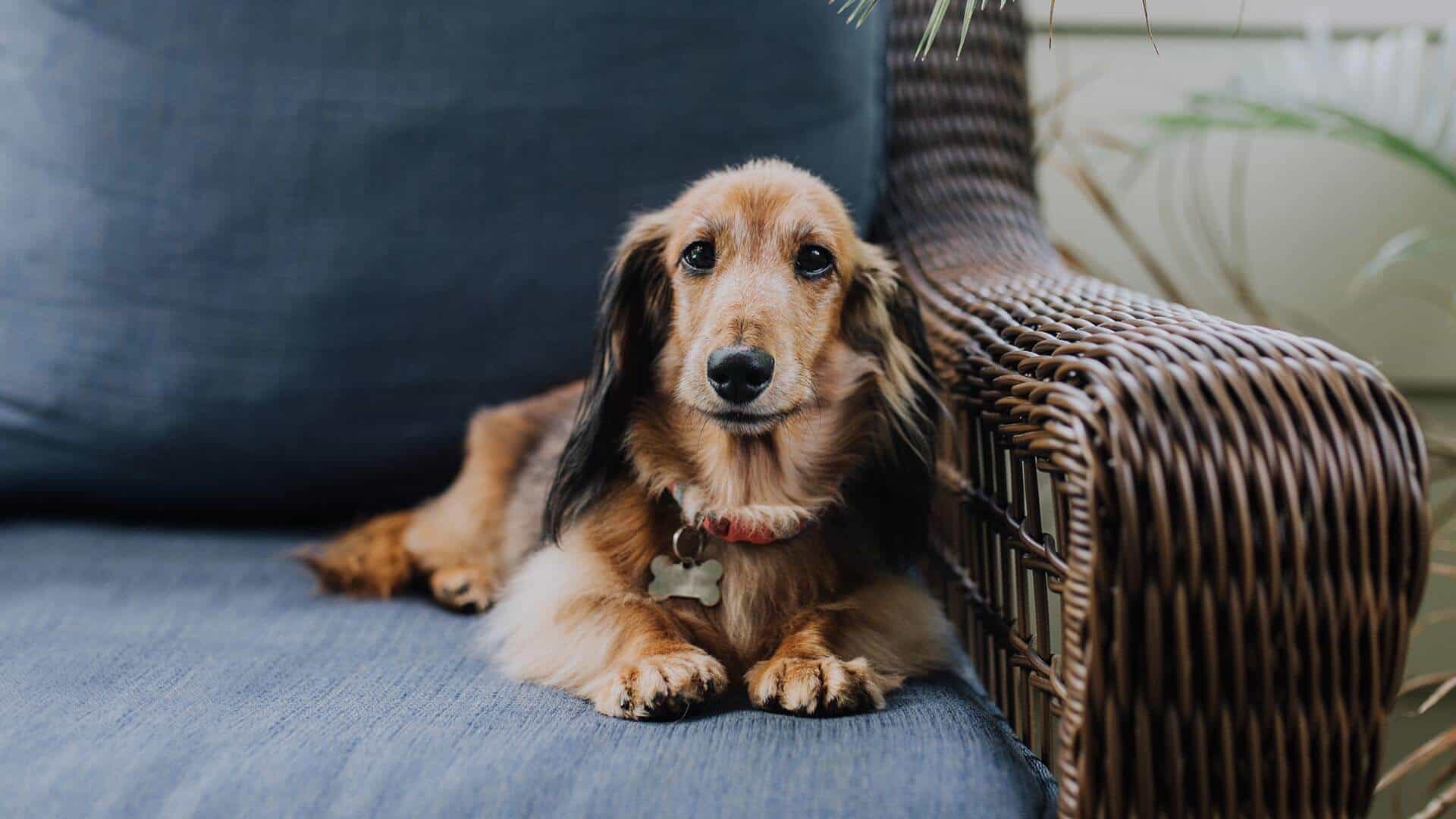
Do Doxiepoos bark a lot?
One of the reasons why Doxiepoos make such great companion dogs is because they don’t bark excessively. They are generally quiet dogs, only barking when they have something important to say. This makes them ideal for people who live in close quarters with their neighbors, such as in an apartment complex. Of course, all dogs bark to some extent, but Doxiepoos tend to be on the quieter side.

Are Doxiepoos Good With Kids?
Another common question about Doxiepoos is whether or not they are good with kids. The answer is yes! Doxiepoos are very patient and loving dogs, which makes them great around children. They are also small, making them less likely to knock over a child while playing. However, as with any dog breed, it’s always best to supervise young children around dogs to be safe.
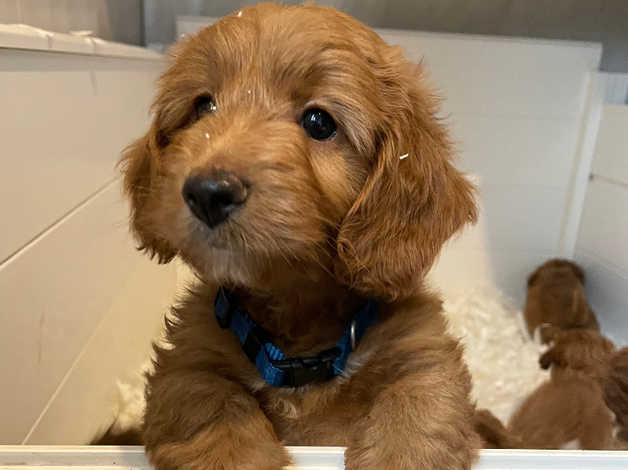
Final Thoughts
Doxiepoos are an excellent breed for those looking for an intelligent, outgoing, and affectionate companion. They are easy to train and make great family pets. However, they may not be best suited for homes with very young children or giant dogs. Doxiepoos are also less likely to trigger allergies in sensitive individuals. Overall, Doxiepoos make great pets for those looking for an active and loving companion.
FREQUENTLY ASKED QUESTIONS
IS A DOXIEPOO A GOOD DOG?
Additionally, doxiepoos are a loving and affectionate breed despite their tendency to be independent thinkers. He will relish being with his family and playing with the lap dog. A doxiepoo can be won over by even strangers very quickly, and they often become fast friends with the tiny dogs, especially when treats are involved.
HOW MUCH DOES A DOXIEPOO COST?
An ordinary doxiepoo puppy costs about $250 on average. However, a dixie doodle puppy with excellent genetics, no health issues, and early-life training may cost as much as $2,000 if you work with a highly reputed breeder.
DO DOXIEPOOS BARK A LOT?
Although it’s impossible to predict which parent a Doxiepoo will resemble more, a Dachshund or a Poodle, you can be sure that you’ll get a cute, loving, intelligent, and energetic family dog. It’s crucial to begin training as early as possible to curb this behavior because both parent breeds have a propensity for excessive barking.
DO DOXIEPOO DOGS SHED?
Because of the Poodle parent, the Doxiepoo is hypoallergenic and would shed very little if its coat mirrored the Poodle. The Dachshund also supports low shedding. The Doxiepoo’s medium-length hair must be brushed daily to avoid matting and tangles.




